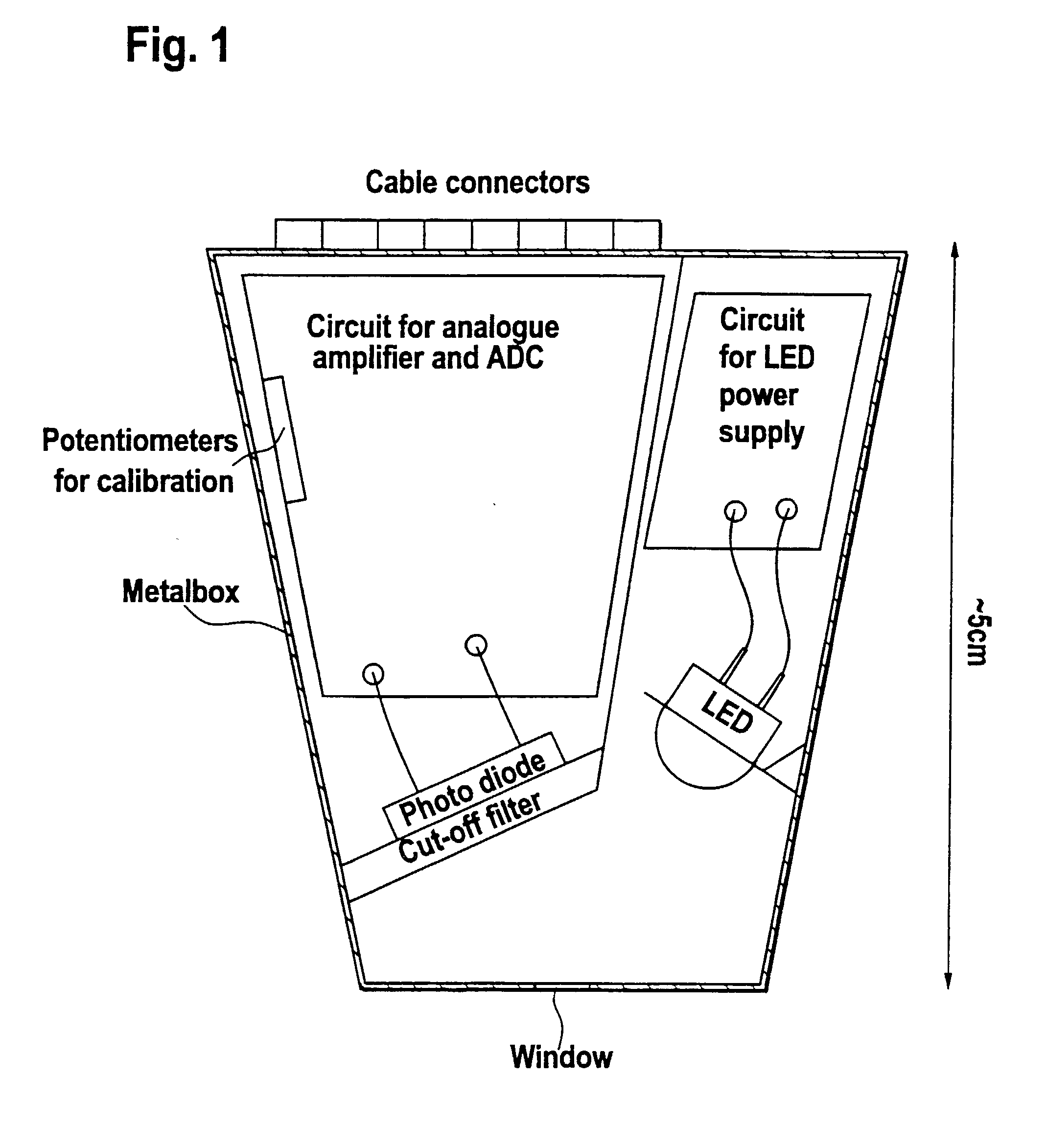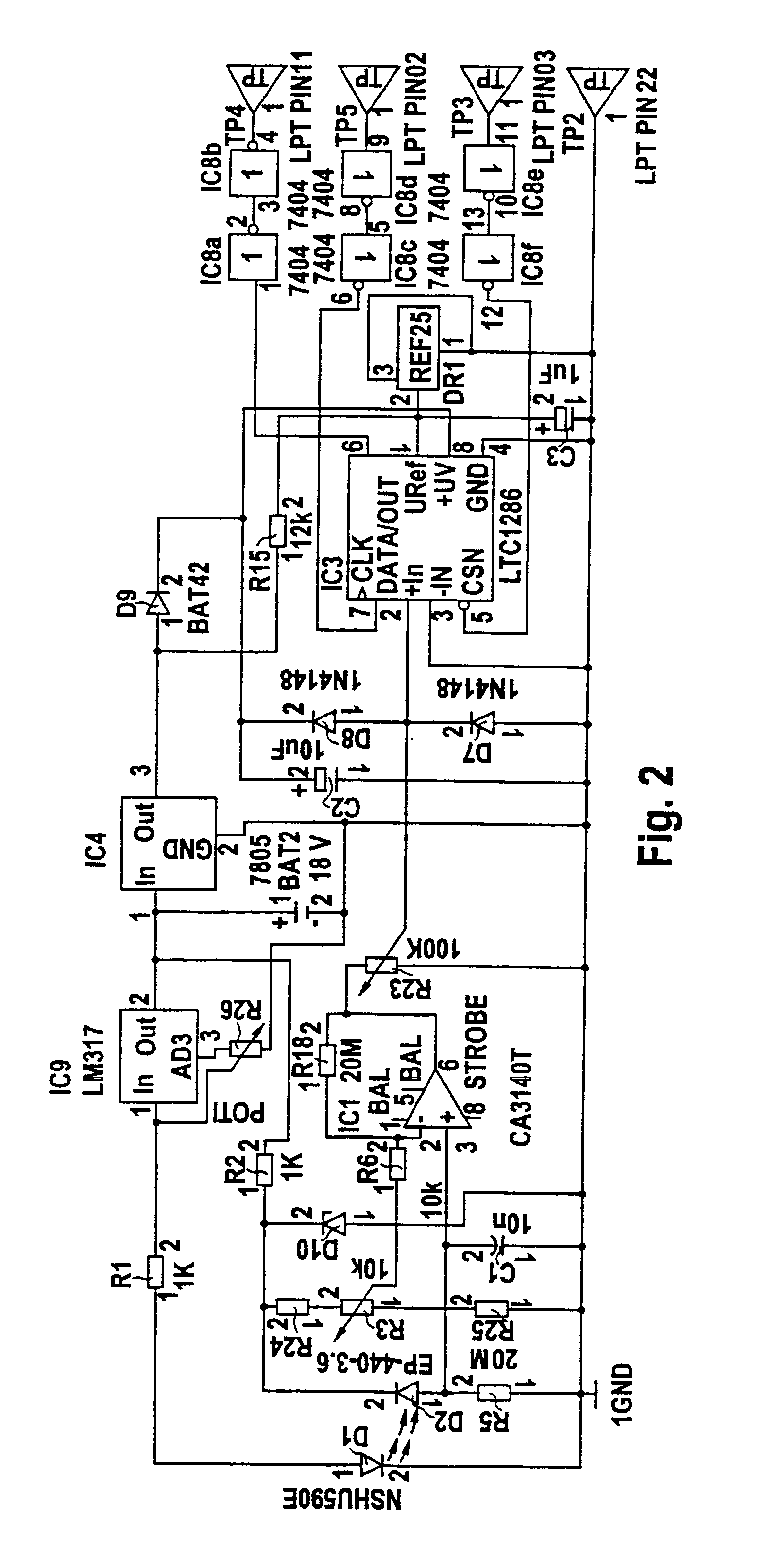Device for the detecting of aflatoxins
a technology for aflatoxins and detectors, applied in the direction of color/spectral properties measurement, instruments, fluorescence/phosphorescence, etc., can solve the problem of significantly lower power consumption of this device than that of other known fluorescence measuring devices, and achieve the effects of low cost, convenient portability, and high precision
- Summary
- Abstract
- Description
- Claims
- Application Information
AI Technical Summary
Benefits of technology
Problems solved by technology
Method used
Image
Examples
Embodiment Construction
[0037] The performance of the device for the detection of aflatoxin (DDA) as described above has been tested on test samples of paprika and pistachios. The developed TLC-plates were first scanned with the commercially available Scanner (CAS) as a reference and subsequently scanned with the developed DDA.
[0038] Thin-layer chromatograms with aflatoxin B.sub.1. concentrations ranging from 1 ng to 9 ng absolute per spot were developed and reflected contamination levels of about 1 ng / g and above. Aflatoxin B.sub.1 was chosen to be the single analyte to demonstrate the performance, since it is the predominant aflatoxin found in contaminated food products and is also explicitly regulated as a single contaminant.
[0039] For comparison aflatoxin chromatograms were first scanned with the CAS and subsequently re-scanned with the DDA. The scan with the DDA was performed in an angle 90.degree. to the development of the TLC-plate in order to allow the simultaneous determination of all aflatoxin B1...
PUM
| Property | Measurement | Unit |
|---|---|---|
| sensing wavelength | aaaaa | aaaaa |
| sensing wavelength | aaaaa | aaaaa |
| sensing wavelength | aaaaa | aaaaa |
Abstract
Description
Claims
Application Information
 Login to View More
Login to View More - R&D
- Intellectual Property
- Life Sciences
- Materials
- Tech Scout
- Unparalleled Data Quality
- Higher Quality Content
- 60% Fewer Hallucinations
Browse by: Latest US Patents, China's latest patents, Technical Efficacy Thesaurus, Application Domain, Technology Topic, Popular Technical Reports.
© 2025 PatSnap. All rights reserved.Legal|Privacy policy|Modern Slavery Act Transparency Statement|Sitemap|About US| Contact US: help@patsnap.com



